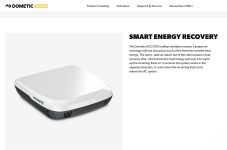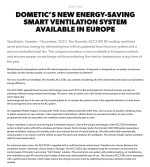Trail Talk
Well-known member
Looks like efficiency varies based on the difference in temperature between incoming and out going air. The rate of heat transfer increases as the temperature difference increases.
Efficiency also varies depending on the fan speed because it takes a certain amount of time for heat to transfer from incoming to out going air.
I seem to recall articles that stated the opposite, but perhaps that was related to your second point?


